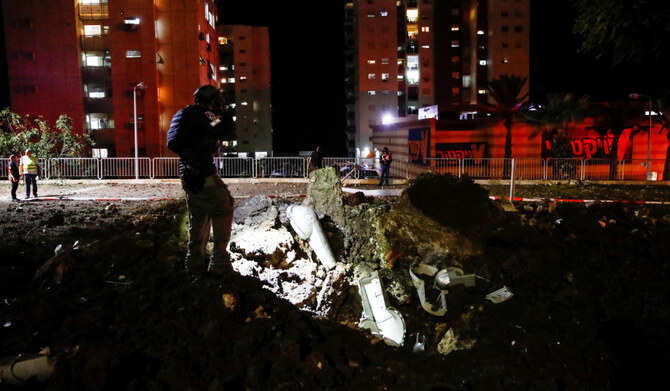KARBALA: Rami, a Syrian worker in Iraq, spends his 16-hour shifts at a restaurant fearing arrest as authorities crack down on undocumented migrants in the country better known for its own exodus.
He is one of hundreds of thousands of foreigners working without permits in Iraq, which, after emerging from decades of conflict, has become an unexpected destination for many seeking opportunities.
“I’ve been able to avoid the security forces and checkpoints,” said the 27-year-old, who has lived in Iraq for seven years and asked that AFP use a pseudonym to protect his identity.
Between 10 in the morning and 2 a.m. the next day, he toils at a shawarma shop in the holy city of Karbala, where millions of pilgrims congregate every year.
“My greatest fear is to be expelled back to Syria, where I’d have to do military service,” he said.
BACKGROUND
Authorities are trying to regulate the number of foreign workers as the country seeks to diversify from the dominant hydrocarbons sector.
The Labor Ministry says the influx is mainly from Syria, Pakistan, and Bangladesh, also citing 40,000 registered immigrant workers.
Now, the authorities are trying to regulate the number of foreign workers as the country seeks to diversify from the currently dominant hydrocarbons sector.
Many, like Rami, work in the service industry in Iraq.
One Baghdad restaurant owner admitted that he has to play cat and mouse with the authorities during inspections, asking some employees to make themselves scarce.
He said that not all those who work for him are registered because of the costly fees involved.
Some of the undocumented workers in Iraq first came as pilgrims. In July, Labour Minister Ahmed Assadi said his services investigated information that “50,000 Pakistani visitors” stayed on “to work illegally.”
Despite threats of expulsion because of the scale of the issue, the authorities, at the end of November, launched a scheme for “Syrian, Bangladeshi, and Pakistani workers” to regularize their employment by applying online before Dec. 25.
The ministry says it will take legal action against anyone who brings in or employs undocumented foreign workers.
Rami has decided to play safe, even though “I want” to acquire legal employment status.
“But I’m afraid,” he said. “I’m waiting to see what my friends do, and then I’ll do the same.”
Current Iraqi law caps the number of foreign workers a company can employ at 50 percent, but the authorities now want to lower this to 30 percent.
“Today we only allow qualified workers for jobs requiring skills” that are not currently available, Labor Ministry spokesman Nijm Al-Aqabi said.
It’s a sensitive issue — for the past two decades, even a foreign workforce has dominated the robust oil sector. But now the authorities are seeking to favor Iraqis.
“There are large companies contracted to the government” which have been asked to limit “foreign worker numbers to 30 percent,” said Aqabi.
“This is in the interests of the domestic labor market,” he said, as 1.6 million Iraqis are unemployed.
He recognized that each household has the right to employ a foreign domestic worker, claiming this was work Iraqis did not want to do.
One agency launched in 2021 that brings in domestic workers from Niger, Ghana, and Ethiopia confirms the high demand.
“Before, we used to bring in 40 women, but now it’s around 100” a year, said an employee at the agency.
The employee said it was a trend picked up from rich countries in the Gulf.
“The situation in Iraq is getting better, and with higher salaries, Iraqi homeowners are looking for comfort.”
A domestic worker earns about $230 a month, but the authorities have quintupled the registration fee, with a work permit now costing more than $800.
In the summer, Human Rights Watch denounced what it called a campaign of arbitrary arrests and expulsions targeting Syrians, even those with the necessary paperwork.
HRW said that raids targeted both homes and workplaces.
Ahmed — another pseudonym — is a 31-year-old Syrian who has been undocumented in Iraq for the past year and a half.
He began as a cook in Baghdad and later moved to Karbala.
“Life is hard here — we don’t have any rights,” he said
“We come in illegally, and the security forces are after us.”
His wife did not accompany him. She stayed in Syria.
“I’d go back if I could,” said Ahmed. “But life there is very difficult. There’s no work.”



























